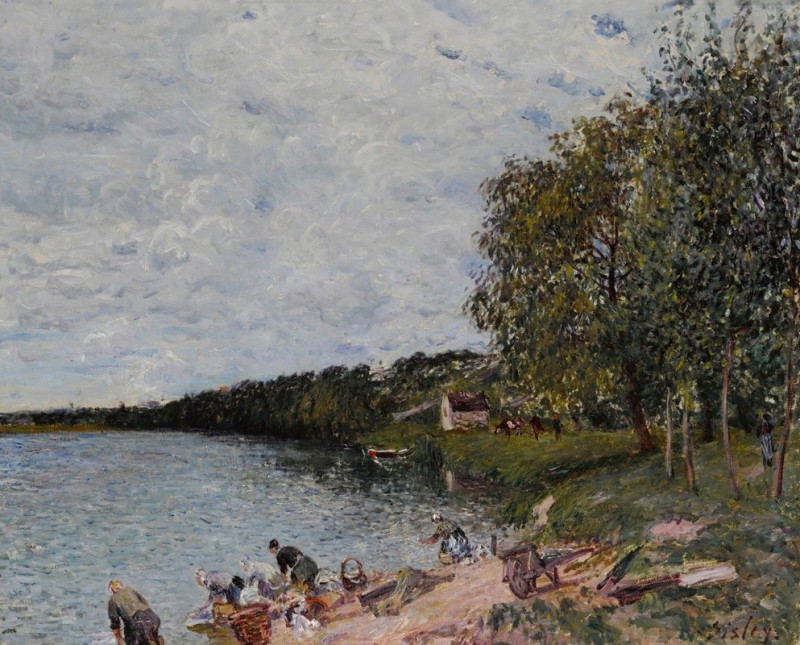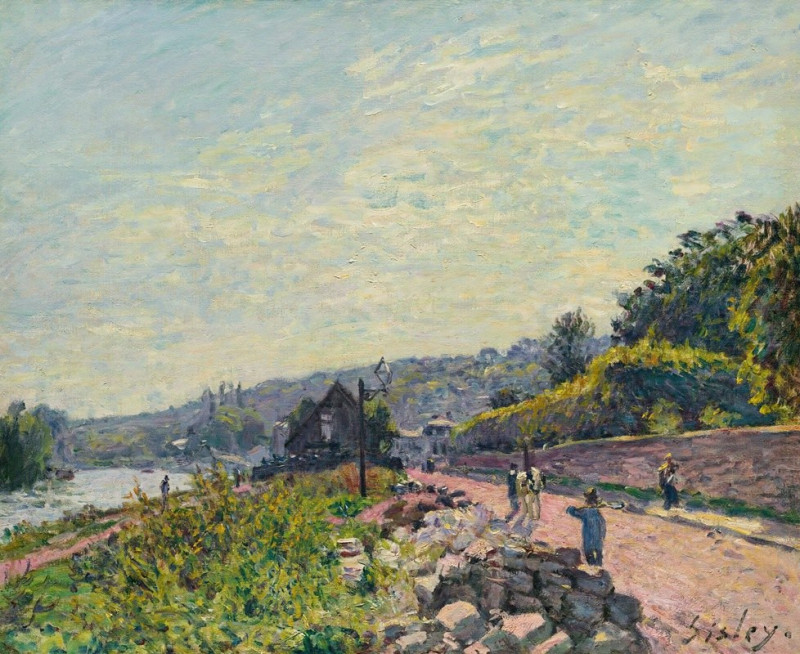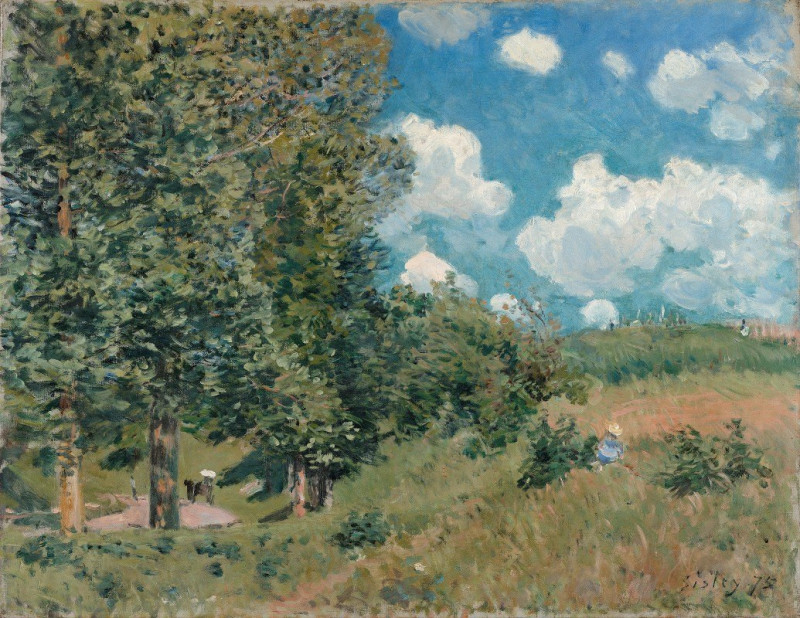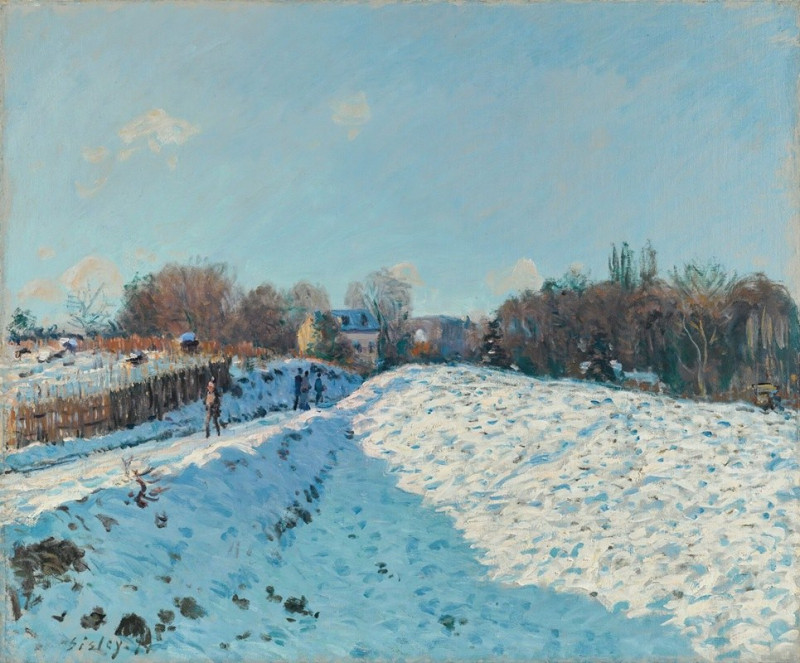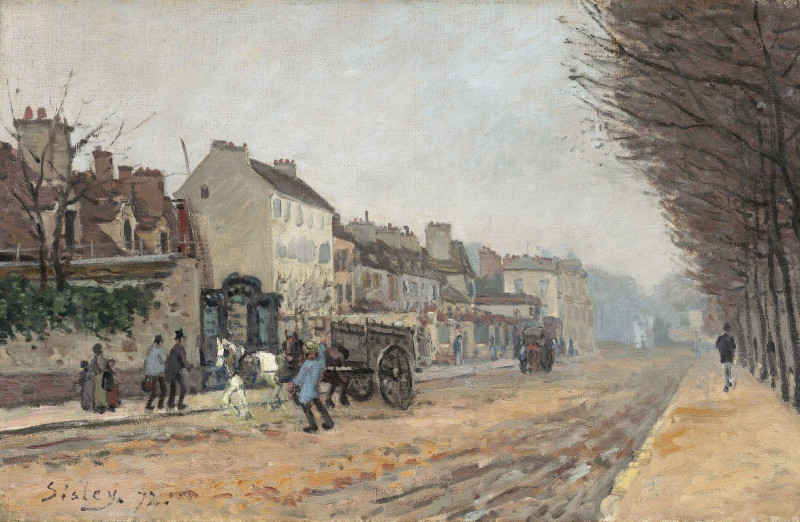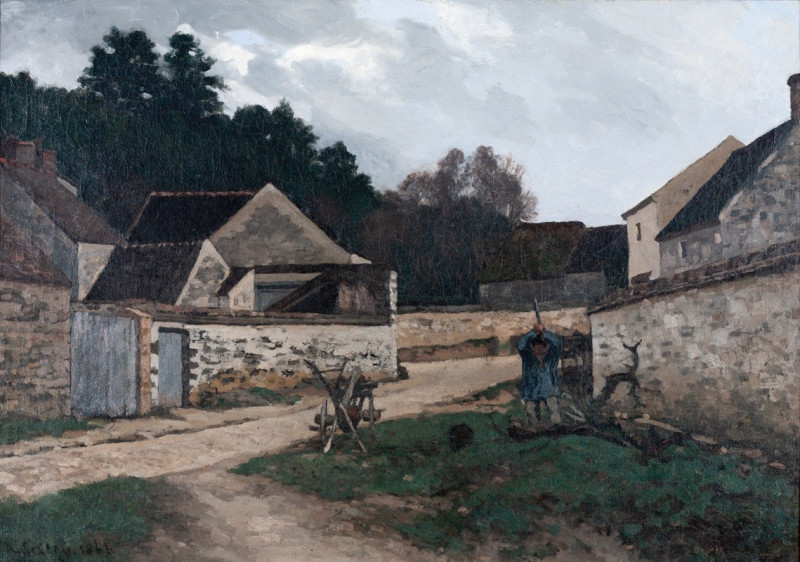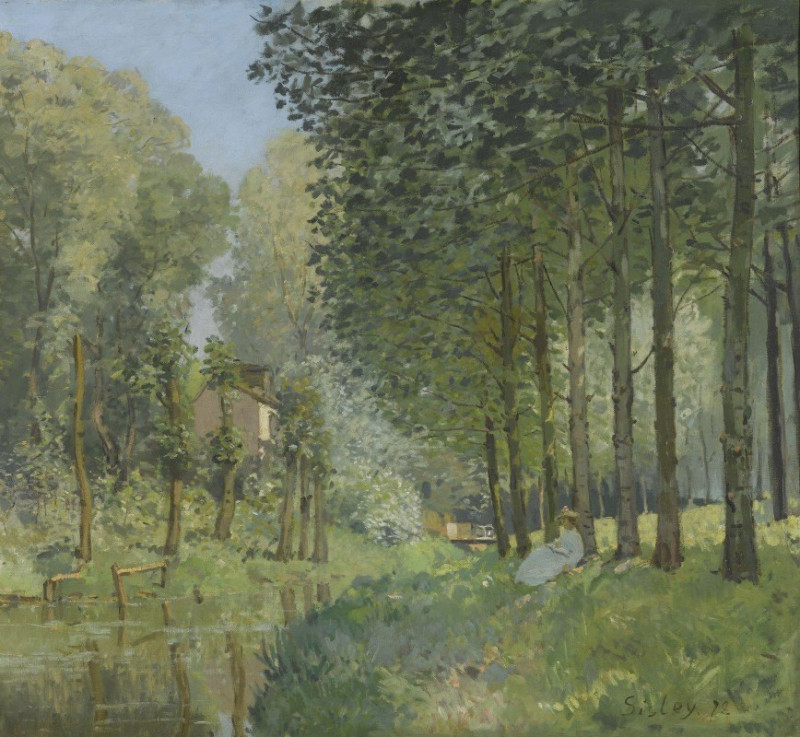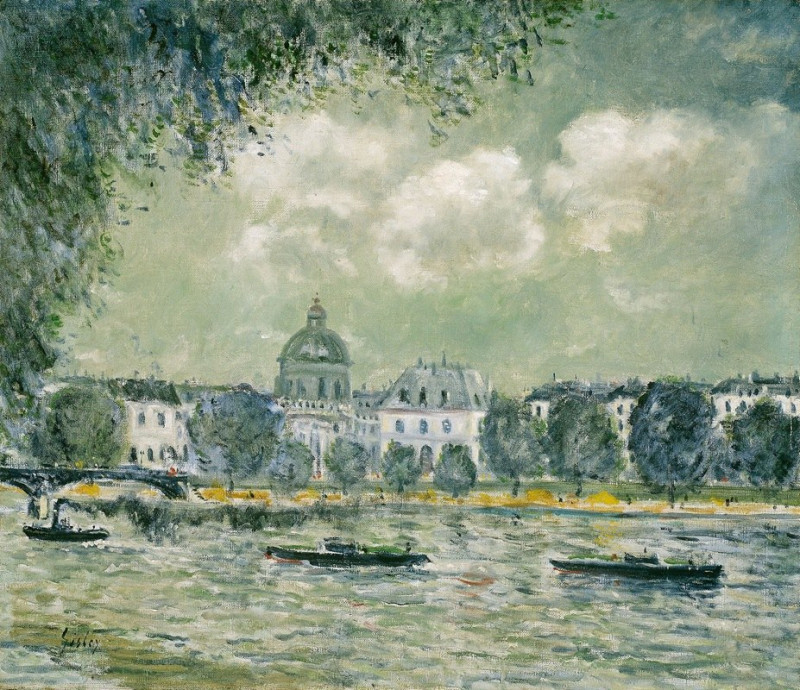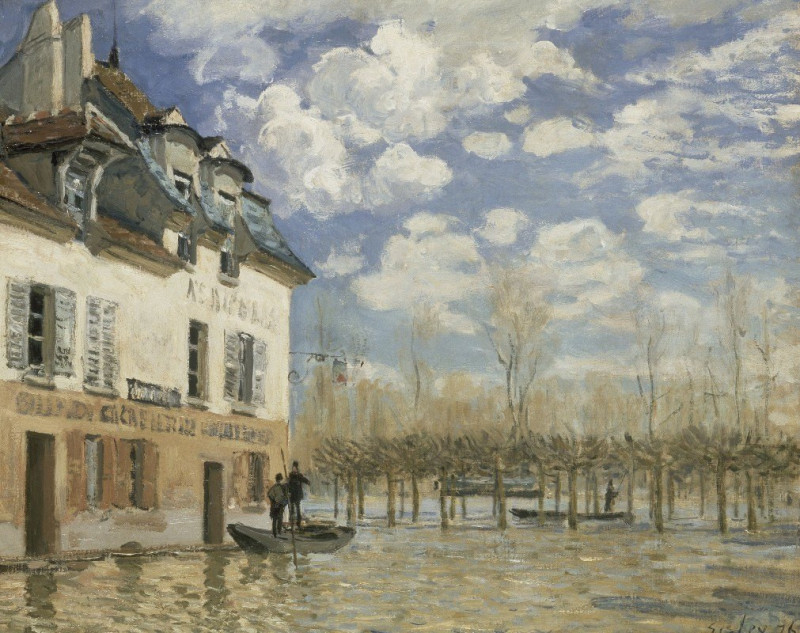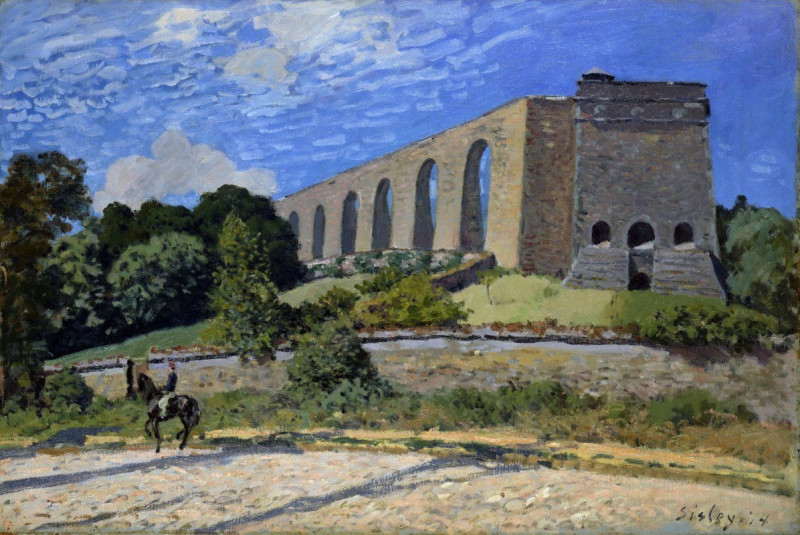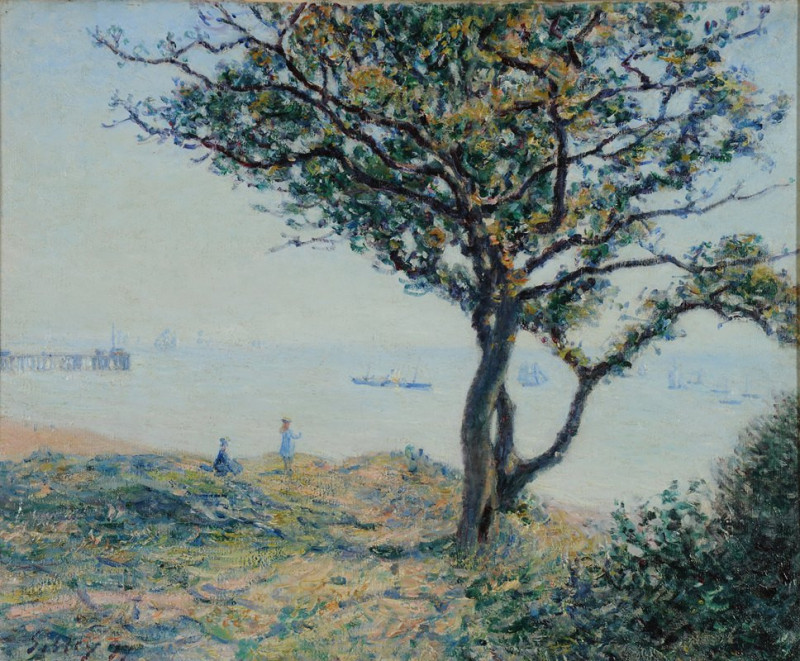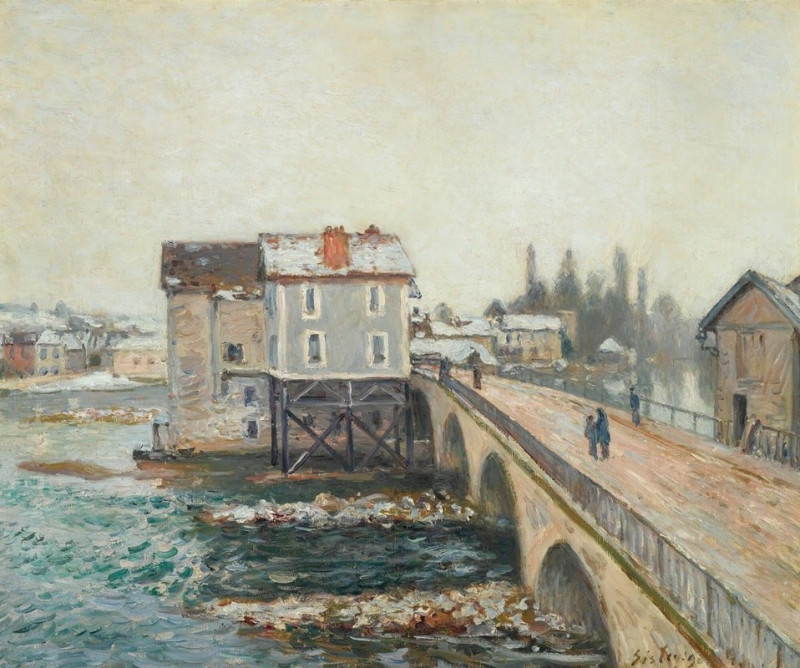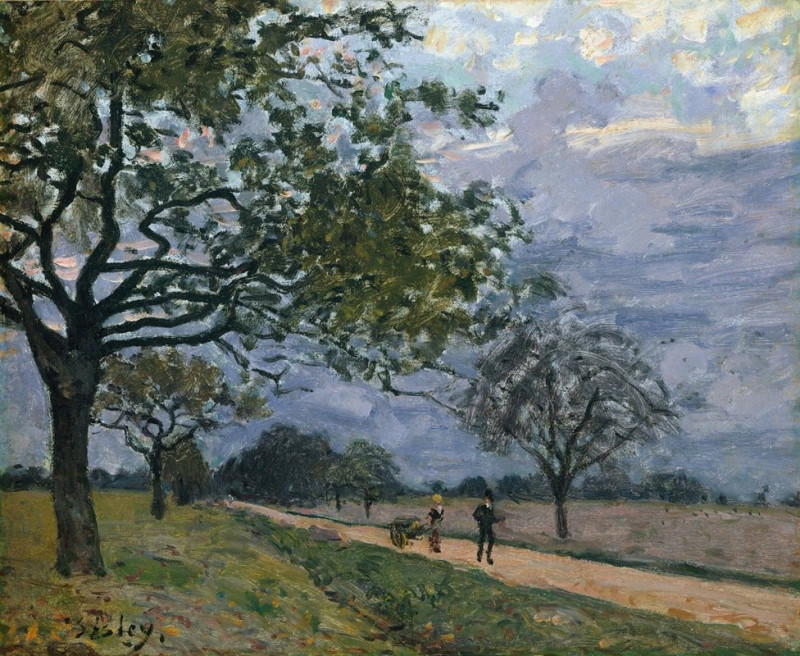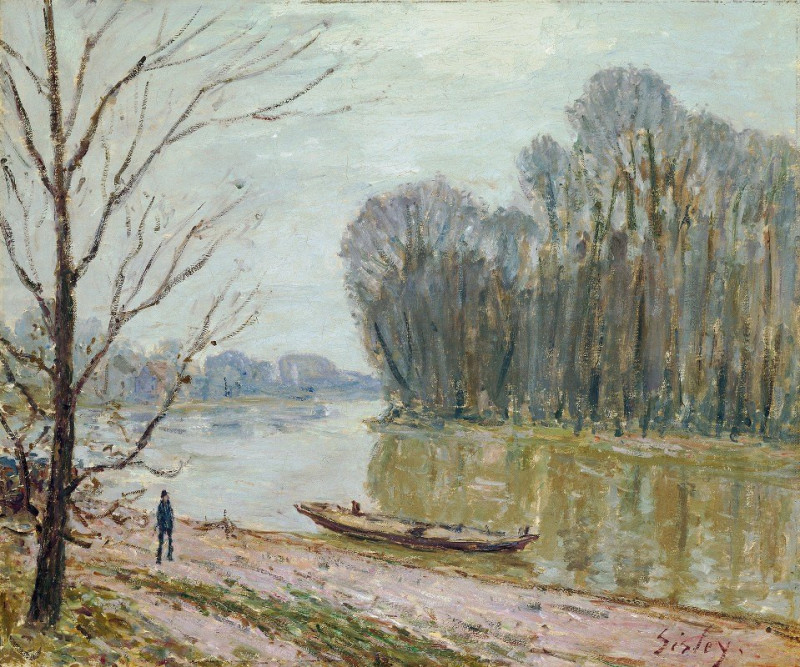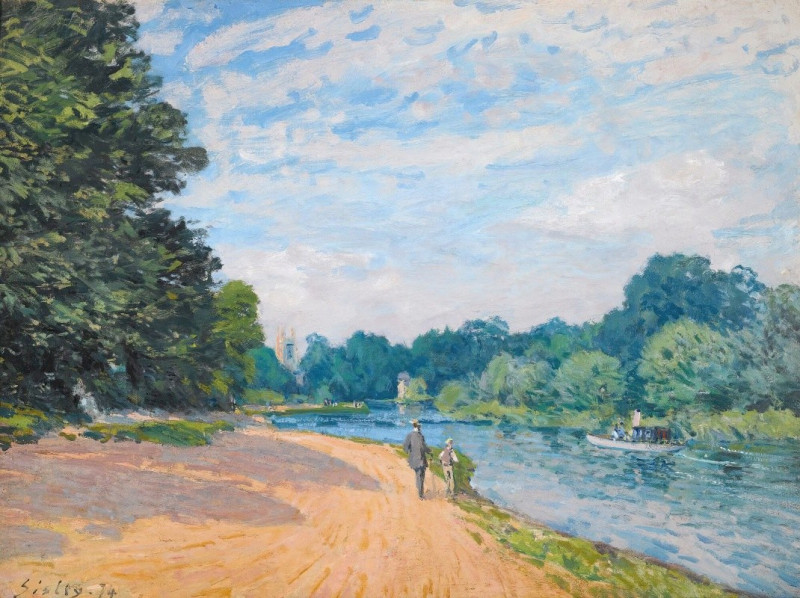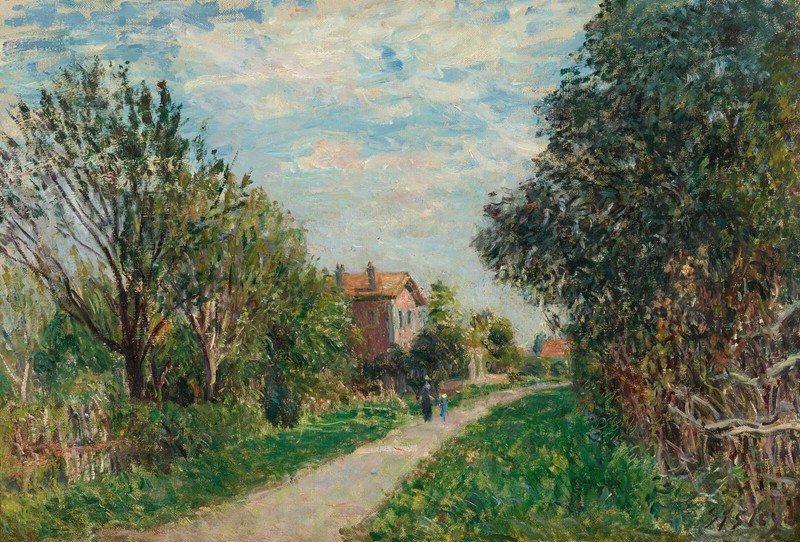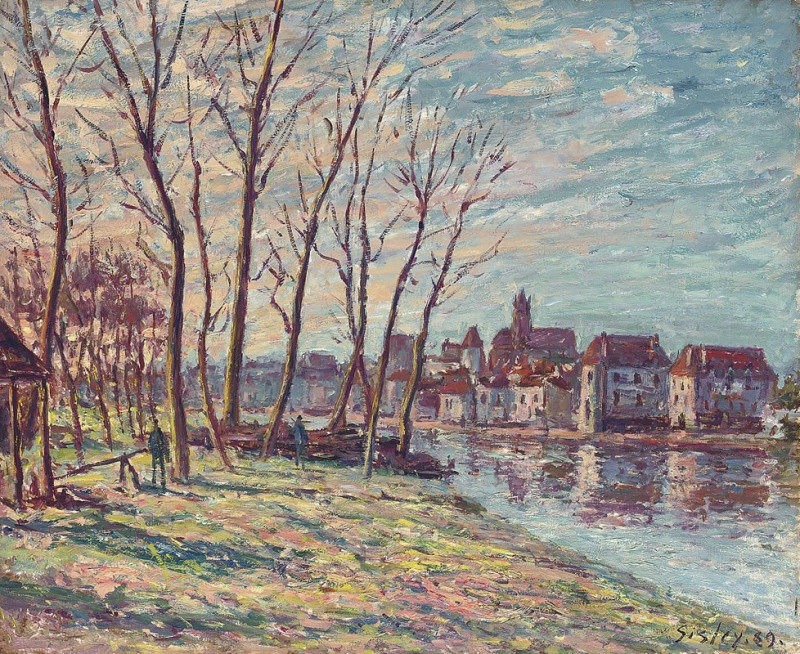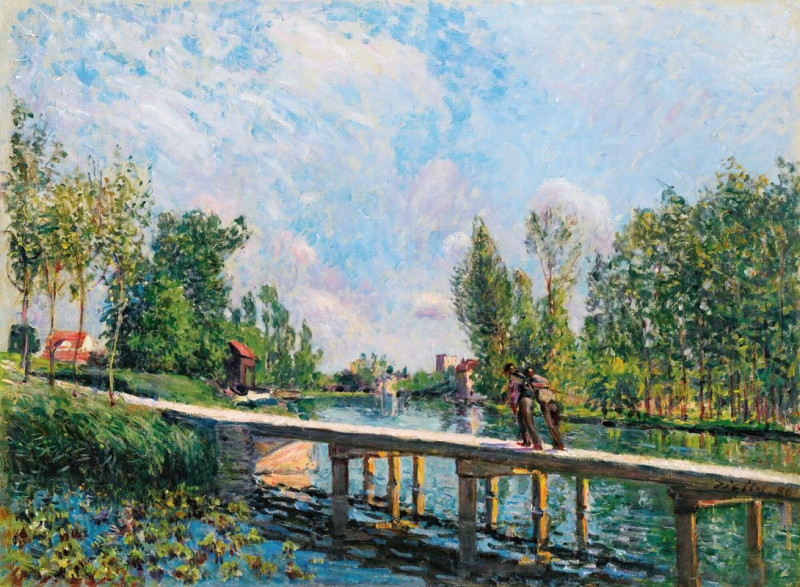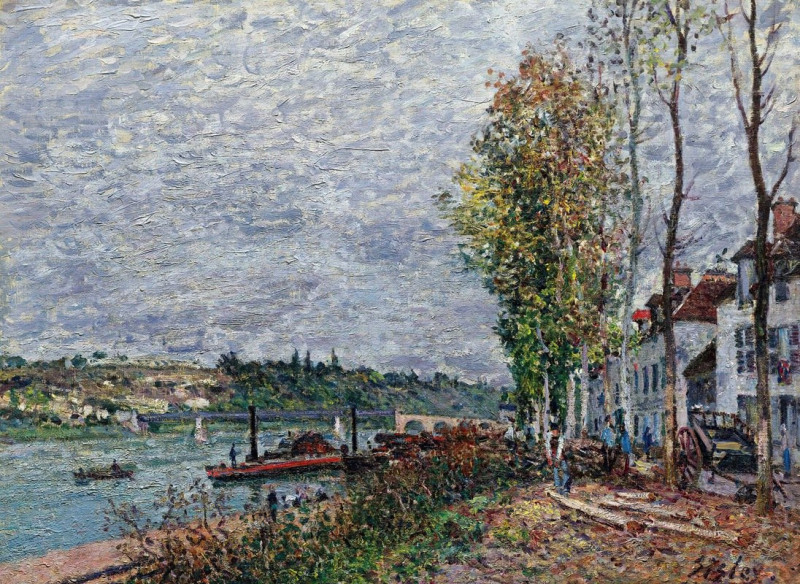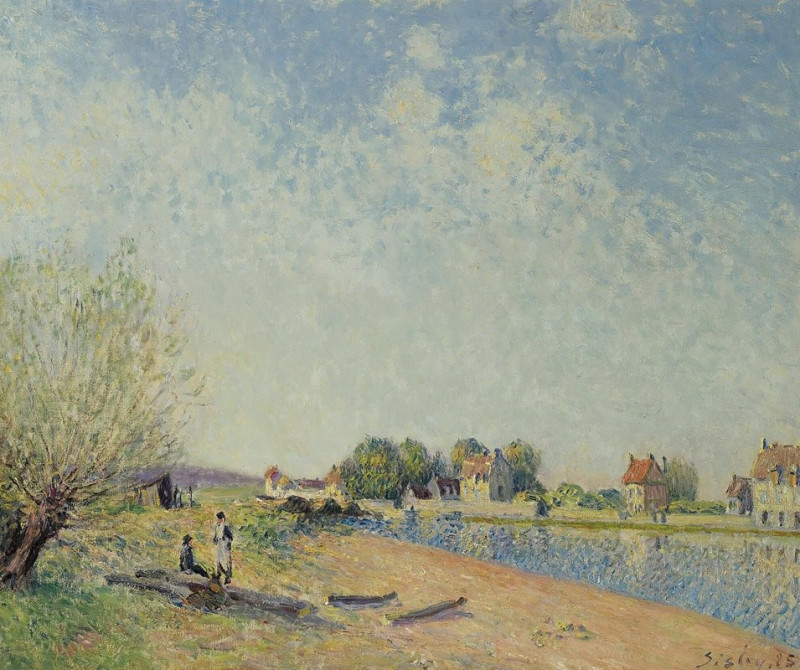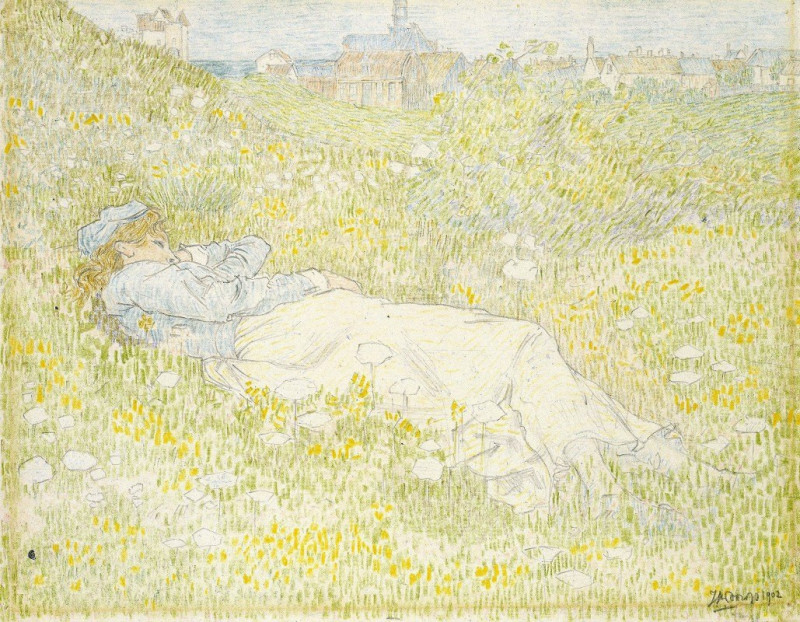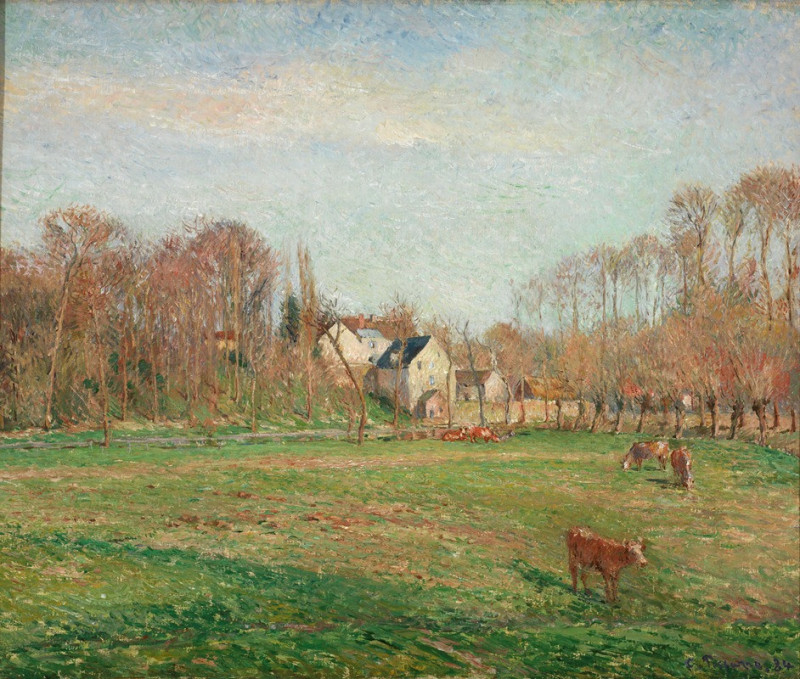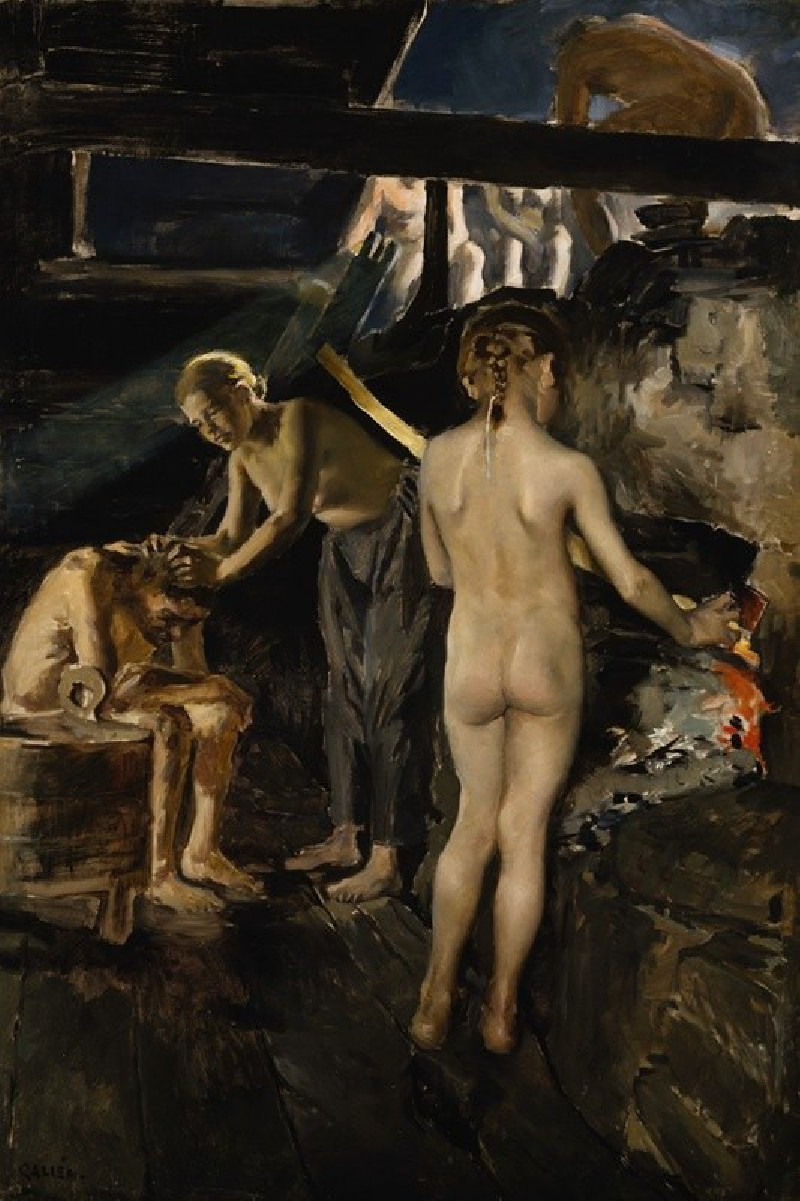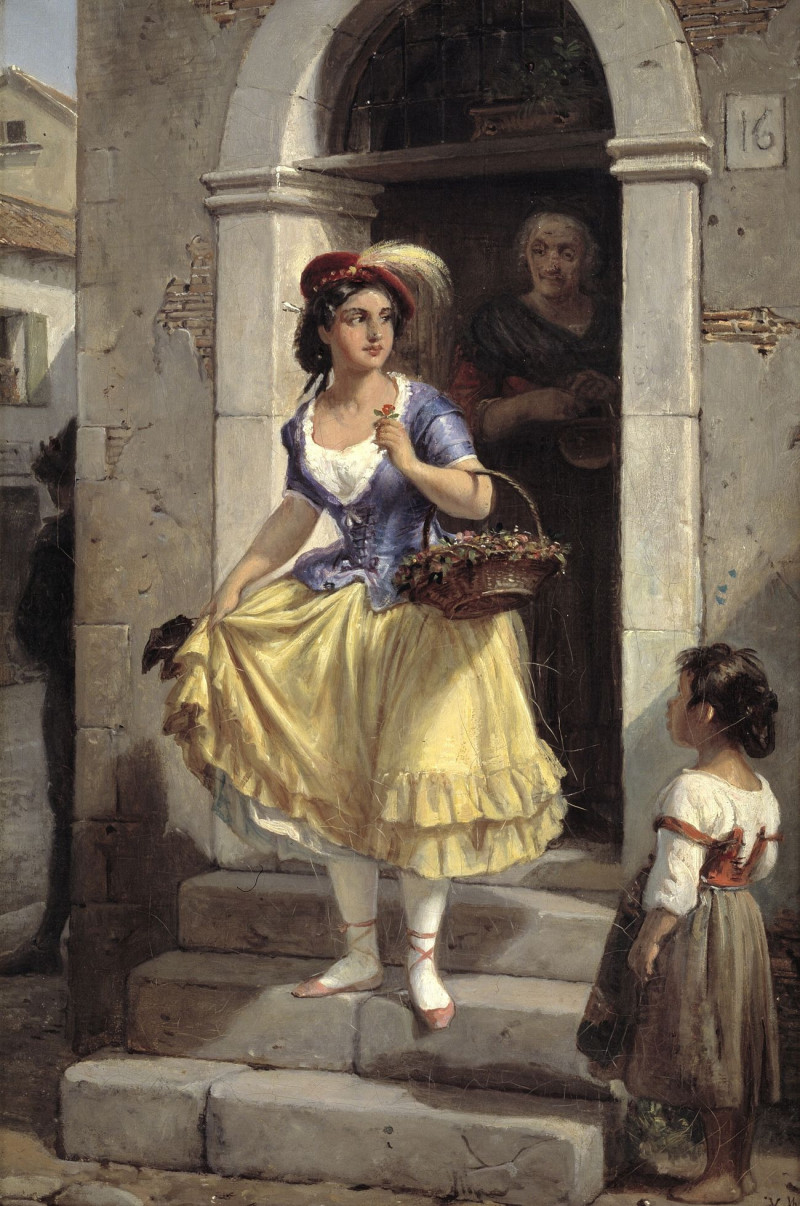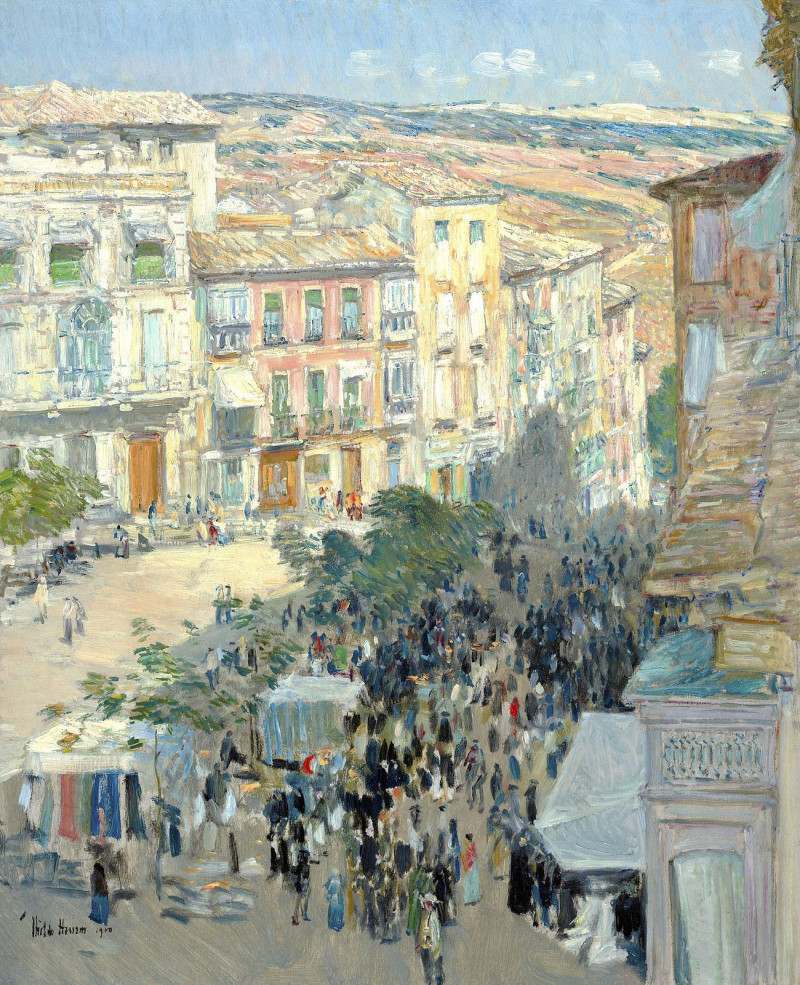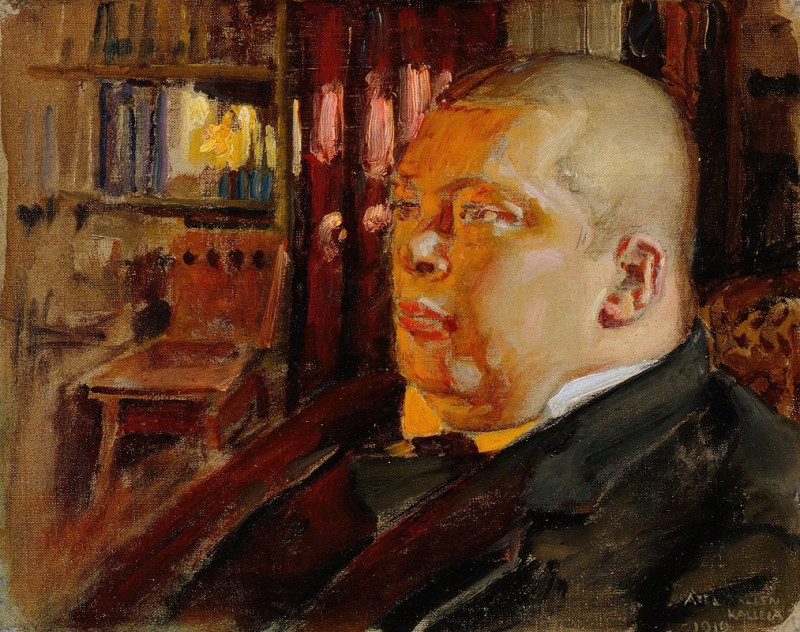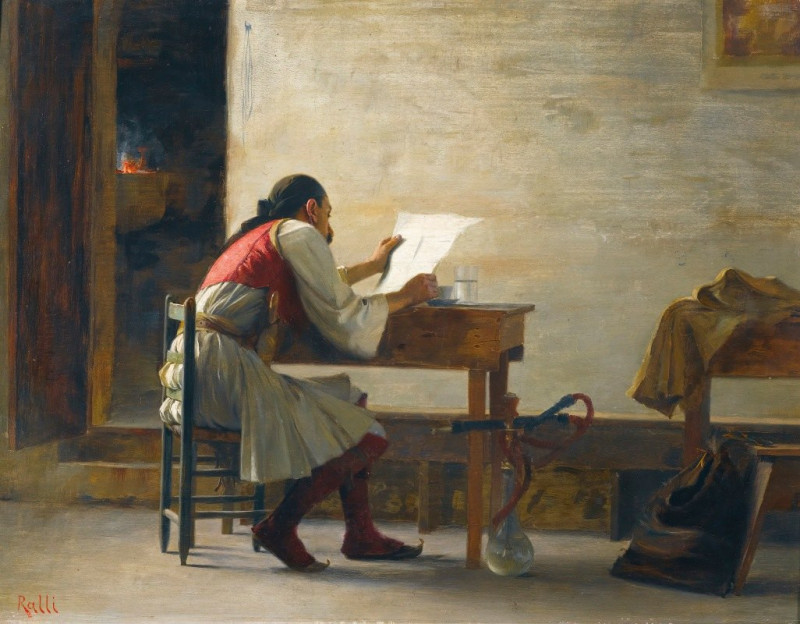Lavandières près de Champagne (1879)
Technique: Giclée quality print
Recommended by our customers
More about this artwork
"Lavandières près de Champagne," painted by renowned Impressionist artist Alfred Sisley in 1879, offers a serene and picturesque view of daily life close to the village of Champagne in the Île-de-France region. This painting embodies the quintessential characteristics of Sisley's work — tranquil landscapes infused with light and the subtleties of natural colors.Depicting a group of washerwomen laboring at the edge of a river, the painting captures a moment of everyday life with grace and sensitivity. The women, bent over their wash, show a blend of motion and stillness, their figures harmoniously integrated into the lush landscape that surrounds them. To the right, the riverbanks are lined with tall, leafy trees casting gentle shadows, enhancing the sense of a breezy, cloud-filled sky above, which reflects subtly on the moving water.The foreground shows a quiet activity; a horse and cart wait patiently, suggesting the continuation of work beyond the frame. Meanwhile, at the far bank, hints of rustic houses and distant figures engage in their own routines, providing a broader context to the scene and portraying a self-sufficient rural community.Sisley’s use of light brush strokes and his focus on the reflective qualities of water mirror the Impressionist intent to capture the fleeting moments of light and color. "Lavandières près de Champagne" is not just a visual representation but an emotional rendering, evoking the tranquility and enduring rhythm of countryside life.
Delivery
Returns
Alfred Sisley (1839–1899), an English impressionist artist, was renowned for his breathtaking impressionist landscape paintings. Born in 1839 to a wealthy family in Paris, Sisley spent most of his life in France. Despite being intended for a career in commerce, he rebelled and pursued his passion for painting as an amateur in the studio of Charles Gleyre, where he befriended artists Claude Monet and Pierre-Auguste Renoir. The financial loss of his family in the Franco-German War led Sisley to make a career out of his art, though it left him financially distressed. It wasn't until after his passing in 1899 that the true value of his work was recognized.

